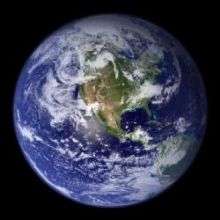Seismic noise unearths lost hurricanes

Seismologists have found a new way to piece together the history of hurricanes in the North Atlantic—by looking back through records of the planet's seismic noise. It's an entirely new way to tap into the rich trove of seismic records, and the strategy might help establish a link between global warming and the frequency or intensity of hurricanes.
"Looking for something like hurricane records in seismology doesn't occur to anybody," said Carl Ebeling, of Northwestern University in Evanston. "It's a strange and wondrous combination."
The research is attempting to address a long-standing debate about whether the warming of sea-surface waters as a result of climate change is producing more frequent or more powerful hurricanes in the North Atlantic. It's a tough question to answer.
Before satellite observations began in the 1960s, weather monitoring was spotty. Ships, planes, and land-based monitoring stations probably missed some hurricanes, which tend to last for about a week or so, Ebeling said. This type of uncertainty poses a problem for scientists, who can't identify trends until they know what the actual numbers were.
To fill in the historical blanks, Ebeling and colleague Seth Stein are looking to seismic noise, an ever-present background signal that bathes the surface of the Earth. Seismic noise derives its energy from the atmosphere and then gets transmitted through the oceans into the solid earth, where it travels as waves. Seismometers record the noise as very low-amplitude wiggle patterns with much larger, obvious signals that come from earthquakes. Subtle changes in seismic noise frequency and amplitude have long been ignored.
Ebeling and Stein analyzed digital seismograms dating back to the early 90s from two monitoring stations: one in Harvard, Mass., and one in San Juan, Puerto Rico. For this study, the researchers looked at seismograms recorded during known hurricanes in an attempt to see whether patterns produced during hurricanes look predictably different from patterns produced during regular storms or when there are no storms at all.
Their preliminary results suggest that hurricanes do indeed produce recognizable patterns, and the waves generated by hurricanes travel large distances. The Harvard station recorded signals from Hurricane Andrew more than a thousand kilometers away.
"There's definitely something there that shows this can be workable," Ebeling said. "This is something new and interesting."
At least one major hurdle remains before scientists will be able to pull together a complete hurricane history out of the seismic records. For most of the 20th century, seismograms recorded data on rolls of paper. Those records, which contain hundreds of thousands of hours of data, will need to be digitized. Ebeling is looking for an efficient way to do that.
Source: Geological Society of America















